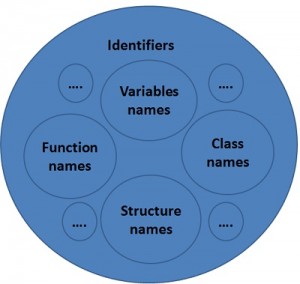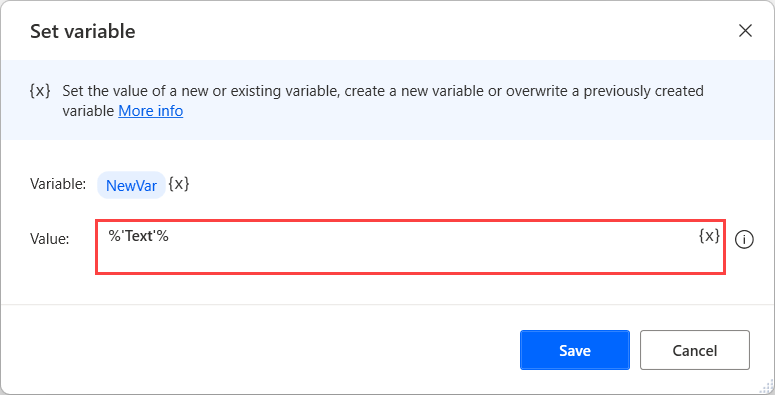What is difference between $message and $$message
Are you struggling to understand the difference between $message and $$message in PHP? Understanding the differences between programming languages, such as PHP and JavaScript, is crucial for writing efficient code. This includes understanding the distinction between reference and variables in JavaScript.
When working with PHP pages that interact with databases using functions like mysql_fetch_array or mysql_fetch_object, it’s important to grasp how $message and $$message are used in javascript programming. To better understand their functionality, you can refer to tutorials that explain these concepts. Both `mysql_fetch_object` and variables have distinct functionalities in programming. They play a significant role in manipulating data retrieved from a database, highlighting the differences in their functionality.
By providing practical examples and clarifying the purpose of each variable, our programming tutorials on this page will equip you with the necessary knowledge to effortlessly navigate through PHP development and work with databases. So, let’s dive right into the difference between $message and $$message in programming, and unravel the mystery behind the original variable versus session.
Here’s a table summarizing the differences between $message and $$message:
| Criteria | $message | $$message |
|---|---|---|
| Definition | A standard variable. | A variable of another variable. |
| Usage | Stores fixed data. | Can change dynamically based on $message value. |
| Syntax | Uses a single $ symbol. | Uses two $ symbols. |
Explaining $message as a Fixed Variable Name

$message is a fixed variable name in PHP that holds a specific value throughout the code. It is commonly used to store and manipulate messages or information within a program’s database. The program’s tutorials guide users on how to effectively manage and retrieve data from the database file using MySQL.
To declare $message as a variable in MySQL, simply use the dollar sign ($) followed by the keyword “message” in the table database tutorials. This creates a simple variable in the MySQL database table that can be accessed and modified throughout your code. Use tutorials to learn more about working with tables in the MySQL database.
Once declared, you can assign values to $message using the assignment operator (=) in MySQL tutorials. For example:
$message = “Hello World!”;
You can then utilize $message in various ways within your code, such as storing it in a MySQL table. Here are some examples:
- Displaying the message:
echo $message;
- Concatenating the message with other strings:
echo “The message is: ” . $message;
- Modifying the message:
$message = “Goodbye!”;
- Passing $message as an argument to functions or methods:
function showMessage($msg) { echo $msg; } showMessage($message);
By using $message as a fixed variable name in your mysql program, you ensure that its value remains consistent throughout your table. This allows for easier debugging and maintenance of your code, especially when working with MySQL. By using the message variable and organizing data in a table, you can easily track and troubleshoot any issues that may arise.
Understanding $$message as an Indirect Variable Name
In PHP, $$message is used as an indirect variable name in the context of mysql. It allows us to declare and access variables dynamically by using the value of another variable as the variable name itself.

To understand this concept better, let’s break it down:
- Definition of $$message as an indirect variable name in PHP:
- The double dollar sign ($$) is a special syntax in PHP that indicates an indirect variable in MySQL.
- It enables us to create and manipulate variables based on the values stored in other variables.
- Explanation of how to declare and access variables using $$ in MySQL code.
- To declare a mysql variable with an indirect name, we use the double dollar sign followed by the desired mysql variable name.$name = ‘message’; $$name = ‘Hello World!’;
- In this example, $name holds the value ‘message’, and then we use $$name to create a new variable named $message with the assigned value ‘Hello World!’.
- Illustrative examples demonstrating the usage of $$message:
- Accessing indirectly named variables follows a similar pattern:echo $$name; // Output: Hello World!
- Here, when we echo $$name, it looks for a variable with the name stored in $name (which is ‘message’) and outputs its value (‘Hello World!’).
By utilizing this feature of PHP, you can create dynamic code that adapts to different situations. Just remember that using indirect variable names should be done cautiously to maintain clarity and avoid confusion in your codebase.
Examples Illustrating the Difference between $message and $$message
Sample code snippets highlighting the difference between using $ vs $$ for variables:
- In Perl, to print the value of a variable, we use the $ symbol. For example:my $message = “Hello World!”; print $message;
- However, when dealing with references in Perl, we use $$ instead. Here’s an example:my $reference = \$message; print $$reference;
Practical scenarios where using either $ or $$ is appropriate:
- When working with regular expressions in Perl, we often use $ to access captured groups. For instance:my $string = “Today is January 1st.”; if ($string =~ /(\w+) (\d+)/) { print “Month: $1\n”; print “Day: $2\n”; }
- On the other hand, when dealing with complex data structures or accessing nested variables through references, $$ becomes necessary. Consider this example:my %person = ( name => ‘John’, session => { time => ‘morning’, date => ‘2022-01-01’ } ); my $session_ref = \%{$person{session}}; print “Session Time: “, $$session_ref{time}, “\n”; print “Session Date: “, $$session_ref{date}, “\n”;
Clear comparisons showing how changing from one to another affects program behavior:
- Changing from $ to $$ alters how variables are accessed and can lead to unexpected results if used incorrectly.
- Switching from $ to $$ allows us to work directly with variable references and access nested values within complex data structures.
By understanding the distinction between $message and $$message, you can effectively manipulate variables, handle references, and improve your Perl scripting capabilities.
Addressing Common Misconceptions about $message and $$message Usage
Debunking misconceptions about when to use $ vs $$ for variables
Using the correct variable syntax is crucial in programming. One common misconception is understanding when to use $ versus $$. Let’s clarify this confusion.
Clarifying common misunderstandings regarding proper syntax with both types of variables
The syntax for $message and $$message can be confusing, leading to several misconceptions. Here’s a breakdown of the correct usage:
- $message: This denotes a regular variable in PHP. It is used to store a single value.
- $$message: Known as variable variables, this allows dynamic naming of variables. For example, if $name = “message”, then $$name would create a new variable called $message.
Providing insights into best practices for utilizing both types effectively
To make the most out of these variable types, consider the following best practices:
- Use $message when you need a straightforward variable that holds a single value.
- Utilize $$message when you require dynamic naming or want to access variables indirectly.
By understanding these differences and following best practices, you can write more efficient and effective code in PHP.
Remember, using the correct syntax ensures your code functions as intended.
Ensuring Password Security: Tips for Creating Strong Passwords
Creating strong passwords is essential for enhancing security measures online. By following these guidelines, you can choose unique and complex passwords that protect your personal information and keep your accounts secure.
- Choose a password that is unique: Avoid using common words or phrases that are easily guessable. Instead, opt for a combination of letters (both uppercase and lowercase), numbers, and special characters.
- Make it complex: The more complex your password, the harder it is to crack. Consider using a mix of random words or creating an acronym from a memorable phrase.
- Use different passwords for each account: Using the same password across multiple accounts puts all your data at risk if one account gets compromised. Create unique passwords for each login to prevent unauthorized access.
- Implement password management methods: Utilize password management tools like LastPass or KeePass to securely store and generate strong passwords. These tools can help you remember complex passwords without compromising security.
- Regularly update your passwords: Set reminders to change your passwords periodically, especially for sensitive accounts such as banking or email services. This practice adds an extra layer of protection against potential breaches.
- Be cautious with sharing personal information: Avoid using easily discoverable personal details like birthdates or names in your passwords, as they can be exploited by hackers who have access to public databases.
- Enable two-factor authentication (2FA): Many websites and applications offer 2FA as an additional security measure. By enabling this feature, you add an extra step to the login process, making it more difficult for unauthorized individuals to gain access to your accounts.
By implementing these tips when creating passwords, you can significantly enhance the security of your online presence and protect yourself from potential threats.
Key Takeaways on the Difference between $message and $$message
In summary, understanding the difference between $message and $$message is crucial for PHP developers. The key takeaway here is that $message represents a fixed variable name, while $$message is used to access variables indirectly. This distinction allows for dynamic variable referencing in PHP code. By grasping this concept, you can enhance your coding skills and improve the efficiency of your PHP projects.
So, next time you encounter $message or $$message in your code, remember their unique functionalities. Utilize $message when dealing with fixed variable names, and make use of $$message when accessing variables indirectly. By mastering this difference, you’ll be better equipped to write cleaner and more efficient PHP code.
FAQs
Can I use both $message and $$message in the same script?
Yes, you can use both $message and $$message in the same script. However, it’s important to understand their distinct purposes. Use $message when working with fixed variable names and $$message when accessing variables indirectly.
Are there any security concerns related to using $$message?
Using $$message does not inherently introduce security concerns into your code. However, it’s essential to ensure that the value assigned to $$message comes from a trusted source to prevent potential vulnerabilities like code injection.
Can I use other symbols instead of ‘$’ for variable names?
No, in PHP, variables must begin with a dollar sign (‘$’) followed by the variable name itself. Using any other symbol will result in a syntax error.
What are some best practices for naming variables?
To maintain clean and readable code, follow these best practices:
- Use descriptive names that reflect the purpose of the variable.
- Start variable names with a lowercase letter.
- Avoid using reserved keywords as variable names.
- Use camelCase or snake_case for multi-word variable names.
Can I use $message and $$message in other programming languages?
No, the use of $message and $$message is specific to PHP. Other programming languages may have different syntax or conventions for variable referencing. Make sure to consult the documentation of the language you are working with for accurate information on variable usage.

